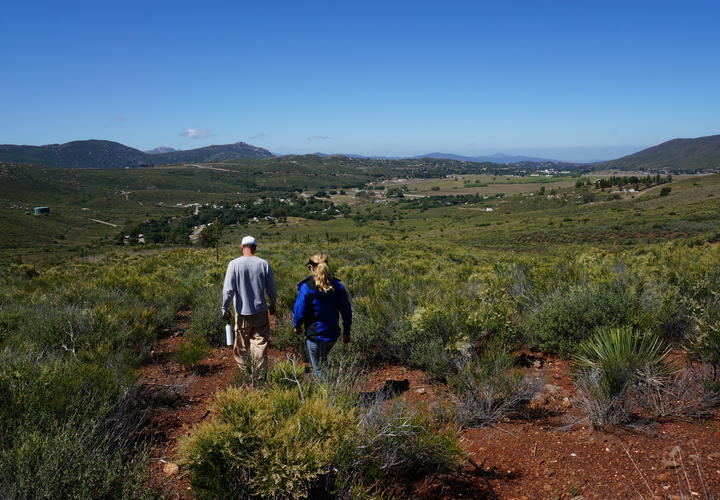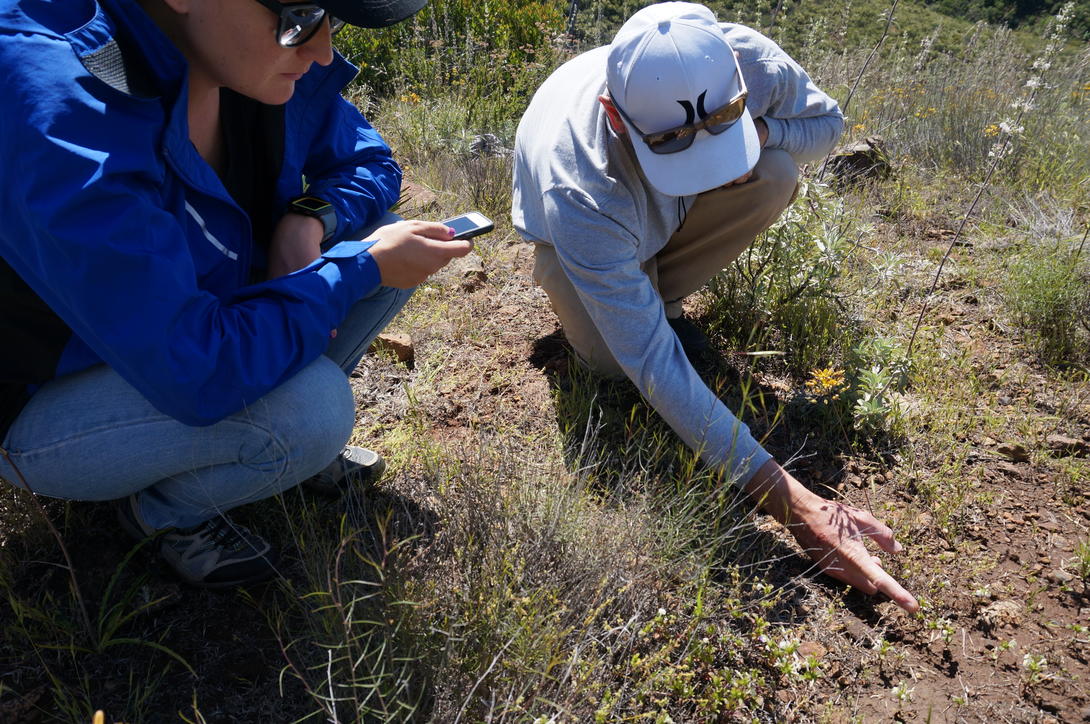Known as a biodiversity hotspot, our region is home to approximately 200 different types of sensitive, rare, threatened or endangered species. Listed species include furry and feathered creatures, as well as insects and plants. One endangered plant that we are working to protect is the San Diego Thornmint.
This annual herb in the mint family blooms between April and June and only occurs naturally in Southwestern San Diego and Northern Baja California in coastal sage scrub, chaparral, and grassland habitats, according to the California Department of Fish and Wildlife. There are fewer than 50 observed locations of San Diego Thornmint in our region, which means protecting the existing population and helping to expand it are very important to ensure species survival.

Two sites foster growth of the plant
SDG&E Senior Environmental Specialist and Restoration Ecologist Marc Doalson works on two projects in unincorporated eastern San Diego County covering about 42 acres to help enhance the survival of this endangered plant. In the project areas, the focus is controlling non-native plants to prevent them from crowding out the Thornmint. When invasive plants are removed, it also helps reduce brush that serve as fuel for wildfires.
Our environmental staff partnered with the US Forest Service to implement an innovative approach to weed management. A grass-specific herbicide is used to eliminate the non-native grasses. The herbicide applications are timed such that they do not affect the native grasses.
In a practice known as seed bulking, seeds for the Thornmint were collected from a target wild population of plants and grown in a controlled nursery setting. Then they were transplanted to targeted soils that are ideal for the plant to thrive and multiply.
From 2 to 4,956
Two years ago, seven Thornmint plants were identified during survey work at a U.S. Forest Service property near Alpine. Last year, that number dropped to just two plants.
Thanks to the innovative approach developed by SDG&E’s Environmental Services Department and our native seed bank, the 2019 Thornmint population at this site was recently counted at 4,956 plants!

Capturing the thornmint in bloom
Capturing a photo of the Thornmint in bloom requires good timing and preparation.
To reach the restoration property where the Thornmint is blooming, our staff recently tested out one of our new plug-in hybrid electric Mitsubishi Outlanders, with an EPA-Rated combined MPGe of 74 miles. This SDG&E fleet vehicle will replace some of our conventionally-fueled pickups to reduce greenhouse gas emissions while also helping employees get their jobs done in the field.
Interested in learning more about our habitat restoration efforts? Check out this interactive story map.